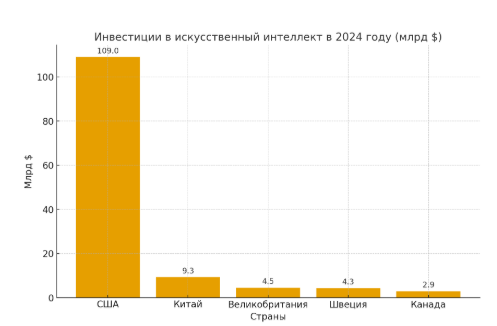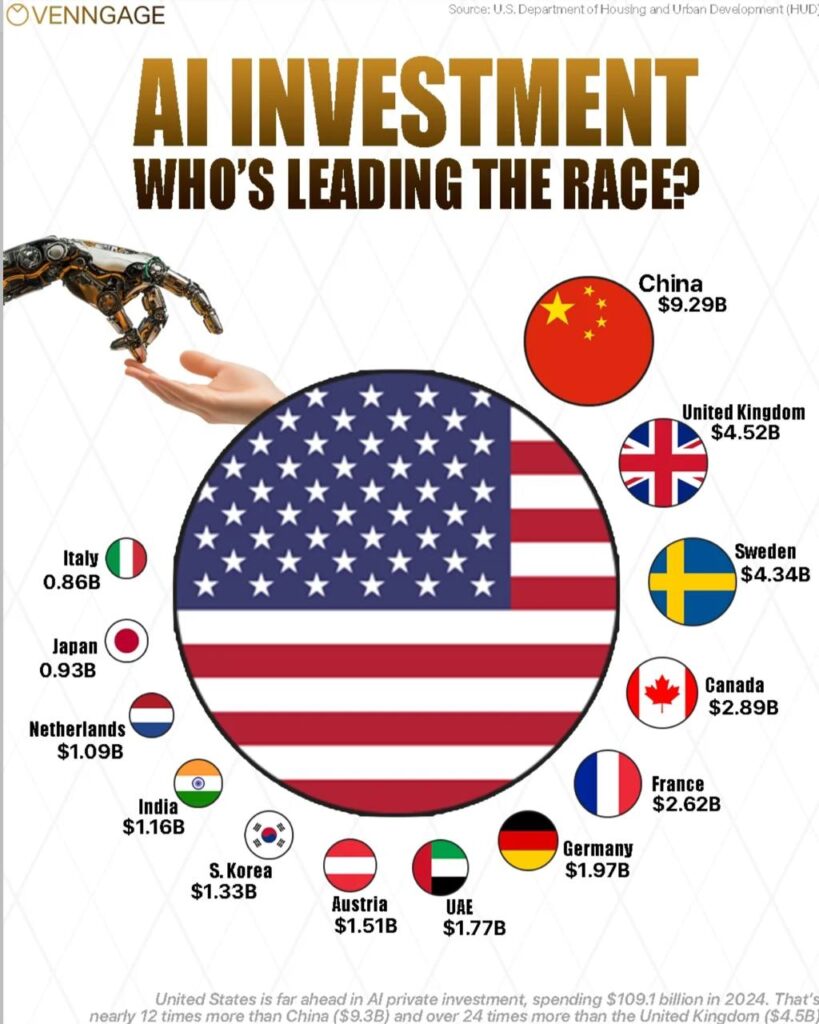💸 The United States invested in artificial intelligence 12 times more than China!
According to the U.S. Department of Housing and Urban Development, the United States has become the undisputed world leader in AI investments. In 2024, American investments reached $109 billion, securing the country’s dominant position in this key future technology sector.

For comparison: China, traditionally considered the main competitor of the U.S. in the race for technological supremacy, invested only $9.3 billion. The United Kingdom directed $4.5 billion to AI development, Sweden — $4.3 billion, and Canada — $2.9 billion. No other country even came close to the American level.

The Global Gap
The full ranking includes France, Germany, South Korea, India, Japan, and other nations. However, even the combined investments of all these countries are not comparable to the U.S. figures. The gap is so large that today the U.S. is not just setting trends but effectively establishing the standards for AI development.
Why This Matters
- The scale of funding directly affects the speed at which new products, platforms, and algorithms appear.
- With its investment volumes, the U.S. controls the infrastructure: from data centers and cloud services to semiconductors and neural network development.
- A strong venture capital base and a well-developed startup ecosystem ensure rapid commercialization of technologies.

💡
Prospects and Consequences
Experts note that such colossal investments allow the U.S. to stay years ahead of competitors, strengthening its leadership in strategically important sectors — defense, medicine, finance, education. China continues to increase its efforts, but a 12-fold gap makes the task of catching up extremely difficult.
In essence, we are witnessing a new global reality: AI is becoming not only a technological but also a geopolitical tool, and at this stage, the United States confidently maintains its role as the undisputed leader.
All content provided on this website (https://wildinwest.com/) -including attachments, links, or referenced materials — is for informative and entertainment purposes only and should not be considered as financial advice. Third-party materials remain the property of their respective owners.


